Pyramid
A pyramid is a three-dimensional shape with a polygonal base and triangular faces that meet at a single point called the apex. The base can be any polygon, but the most common pyramid is a square pyramid, which has a square base and four triangular faces.
Parts of a Pyramid
1. Base: The polygonal base of the pyramid.
2. Apex: The top point where all the triangular faces meet.
3. Height: The perpendicular distance from the base to the apex.
4. Slant height: The distance from the base to the apex along one of the triangular faces.
5. Lateral faces: The triangular faces that connect the base to the apex.
Formulas for Calculating the Volume and Surface Area of a Pyramid
Volume of a Pyramid:
The volume (V) of a pyramid with base area (B) and height (h) can be calculated using the formula:
V = 1/3 * B * h
Surface Area of a Pyramid:
The surface area (A) of a pyramid with base perimeter (P), base area (B), and slant height (l) can be calculated using the formula:
A = 0.5 * Pl + B
Example Problems
Problem 1:
Find the volume of a square pyramid with a base area of 16 cm2 and a height of 10 cm.
V = 1/3 * 16 cm2 * 10 cm = 53.33 cm3
Problem 2:
Find the surface area of a triangular pyramid with a base perimeter of 24 cm, a base area of 36 cm2, and a slant height of 15 cm.
A = 0.5 * 24 cm * 15 cm + 36 cm2 = 252 cm2
Study Guide
To study and understand pyramids, make sure to:
- Understand the parts of a pyramid - base, apex, height, slant height, and lateral faces.
- Learn and apply the formulas for calculating the volume and surface area of a pyramid.
- Practice solving example problems to reinforce your understanding of pyramids.
Remember to always pay attention to the units of measurement when working with pyramid problems, and visualize the shape to better understand its properties and calculations.
Good luck with your studies!
.◂Math Worksheets and Study Guides Fifth Grade. Perimeter
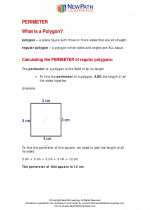
 Activity Lesson
Activity Lesson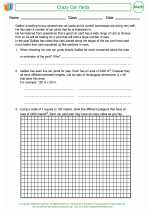
 Worksheet/Answer key
Worksheet/Answer key
 Worksheet/Answer key
Worksheet/Answer key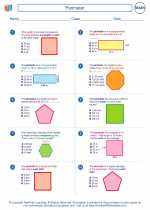
 Worksheet/Answer key
Worksheet/Answer key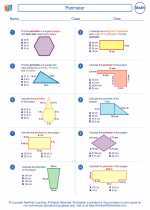
 Worksheet/Answer key
Worksheet/Answer key
 Worksheet/Answer key
Worksheet/Answer key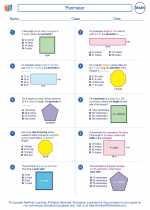
 Worksheet/Answer key
Worksheet/Answer key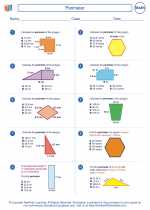
 Worksheet/Answer key
Worksheet/Answer key
